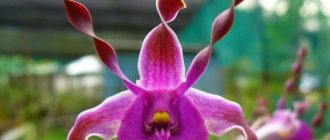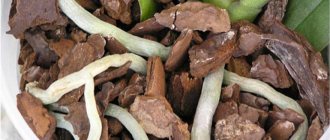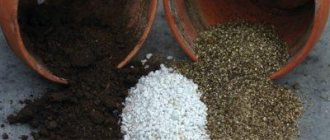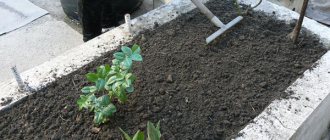Indoor violets description
Usambara violet, or Saintpaulia family. Gesneriev - a small indoor flower with a short stem and leaves collected in a rosette. The color of the leaves varies from light green to dark brown, and there are variegated varieties. Flowers are single, semi-double and double. Through the efforts of breeders, the wild blue violet has acquired all sorts of shades and colors. In the collection of an experienced amateur you can see flowers with patterns, stains, inclusions, and a contrasting border.
indoor violet
Saintpaulia blooms from April to November, but with artificial lighting, flowering can continue all year with short breaks. Violet is a light-loving plant, but does not tolerate direct sunlight. The ideal placement for the plant is windows facing east.
Indoor flowers need moderate watering. Feeding should be done once a month. It propagates very easily: by cuttings, by dividing the bush, by seeds. Only at first glance, growing Saintpaulia seems to be a simple matter; proper care for it requires a certain amount of experience and patience.
Features of growing and caring for violets
The main conditions that such flowers need to create are warmth, bright light, and high humidity. They should be placed in a well-lit place with diffused lighting and at the same time protected from sunlight. Daylight hours should be 13-14 hours. In winter, additional lighting needs to be installed.
The optimal place for the flower to grow is north-eastern and north-western window sills. When grown on the south side, shading is needed.
Did you know? A collector from Odessa collected 3.5 thousand varieties of violets in his apartment, including those grown by astronauts in orbit. This is the largest collection in Europe. It takes a gardener 800 liters of water a week to water his flowers, and he spends $30–40 a month on lighting them.
The best decorativeness and stable growth are observed in those plants that are grown at temperatures of +20...+22°C.
Violets cannot tolerate 3 mistakes in care:
- excessive and frequent watering;
- exposure to drafts;
- severe drying out of the soil.
Therefore, the flower must be protected from these factors.
Watering should be moderate and must be carried out in a tray or using a wick method (connecting a pot with a violet and a container with water using a cord, through which water seeps). It is recommended to perform 1-2 moisturizations every 7 days.
For irrigation, use rainwater, filtered water, or water that has been left standing for 2 days at room temperature. After 30–40 minutes have passed after moistening, the remaining water in the pan must be drained. There is no need to allow it to stagnate - this increases the risk of root rotting.
The flower does not like spraying. To maintain the required high air humidity, at the level of 60–70%, you need to install a humidifier, wipe the leaves with a damp cloth, spray the air next to the flower so that drops do not fall on it, place the pot on a tray with wet pebbles or expanded clay.
Important! It is not recommended to water the violet from above. Drops falling on leaves and stems can cause the development of burns and rot.
During the growing season, flowers need to be fed. This will help preserve the beauty of the leaves, achieve long and abundant flowering, and the health of the bush. At a young age, more nitrogen-containing fertilizers are applied, at a mature age - potassium and phosphorus. Use liquid root baits designed specifically for violets.
Violets degenerate very quickly and are usually renewed every 2-3 years. Transplantation is carried out once a year using the transshipment method.
These flowers can grow in any pots - plastic or ceramic. But it is important to select them according to the size of the plant, because in fairly large containers they will refuse to bloom, and in small containers they will grow poorly. It is also important that the pot has drainage holes.
In specialized stores you can purchase special pots for violets - they have a place for draining unnecessary water and a special hole for supplying moisture.
Soil for violets
Failures associated with flower breeding are most often associated with the wrong choice of soil composition. A regular substrate for Saintpaulia will not work; this can lead to rotting of the root system. An experienced amateur knows that properly prepared soil for violets is the basis for its proper breeding.
The Usambara violet is native to Southeast Africa, where it lives on small patches of land on the slopes of the Usambara Mountains. It is the growing conditions that explain the presence of a small superficial root system in the violet and its requirement for specific soil. The soil for Saintpaulia should be light, porous, well breathable and absorb moisture.
what kind of soil does a violet need?
In addition to the composition of the soil mixture, the choice of pot for the plant is important. The roots of Saintpaulia grow not deep into the soil, but along the surface of the soil. The planting container for the flower should be small in size, the height should be equal to the width, and there must be drainage holes.
Fertilizer
You already know what soil is needed for violets. All that remains is to add fertilizer - and it will be ready for planting. If you plan to plant the plant in purchased soil, then additional feeding can be added only 4 months after planting and rooting of the rosette. Often store-bought mixtures are already saturated with fertilizers; too much of them will be harmful.
If you prepare the soil yourself, you can use charcoal or ash to saturate it with mineral components. One cup of crushed coal is enough for a bucket of soil.
Mullein, or cow dung, would also be a good fertilizer for violets. This fertilizer contains a huge amount of useful microelements, and this has a very positive effect on the development of the root system. Just crush it finely and add it to the soil.
Ground egg shells will also be an excellent organic fertilizer. It will enrich the soil with potassium, calcium and reduce acidity.
Acidity
Soil acidity plays an important role when growing plants. Proper plant development, flowering, and immunity from diseases depend on its level. Violet is very sensitive to this indicator; it cannot grow in either neutral or acidic soil.
Attention! Saintpaulias prefer slightly acidic soil—6-6.5 pH.
If the pH level is lower, the flower's ability to absorb phosphorus and nitrogen is reduced. Plants look pale, weak, and often drop their buds. In conditions of pH above 6.5, the absorption of nutrients is also impaired. Litmus paper can be purchased as an indicator in flower shops. Over time, under the influence of external factors, acidity can change, so changing the color of leaves, slowing growth, and falling flowers serves as a signal to test the soil for acidity.
Which soil has the best composition?
The composition of the soil for violets must contain the following components:
- Nutritious soil. This can be leaf or turf soil. Compost and vermicompost may also be present in small quantities.
- Fillers. Serve to make the soil loose. These include coniferous soil and peat. It is better to use high peat.
- Leavening agents. They give the soil breathability and make the substrate lighter. Vermiculite is a hydromica with a high hygroscopicity coefficient. Perlite—granulated silica (produced in Ukraine) improves soil structure and can make up 10-20% of the mixture. If it is impossible to find these components, use ordinary sand.
- Moisture holders. You can use sphagnum moss and charcoal. They help increase hygroscopicity and regulate humidity. Sphagnum moss has antibacterial properties.
If the acidity of the earth mixture exceeds the norm, dolomite flour is additionally used. Expanded clay is used as drainage and placed at the bottom of the flower pot.
Three methods of transplantation
Depending on the purpose or reason for the procedure, there are three methods , each of which has its own advantages.
Complete substrate replacement
This type of plant replanting is resorted to when the violet stops growing and developing, does not bloom and looks unhealthy . This is a signal that the plant has used all the microelements and the depleted soil can no longer nourish it.
Complete removal of old soil involves cleansing the root system . It is inspected and dried, rotten and damaged parts are removed. As a result, the root part is significantly reduced, and the plant can be planted in a pot of smaller diameter.
Expanded clay is scattered on the bottom as the first layer . Then a small amount of soil is poured on which the violet is laid out, carefully straightening its roots. Next, fill the remaining soil until it comes into contact with the lower leaves. The soil is mulched with vermiculite.
To check whether the soil is well compacted, shake the pot with the plant. compact the soil again .
To maintain soil moisture for the first day, the plant can be covered with plastic film .
This video explains in detail how to properly transplant a violet.
Partial soil replacement
Partial replacement is carried out every time a healthy plant needs to increase the pot . To do this, part of the soil is removed, but the earthen ball around the roots is not touched.
The violet is removed from an old pot in which the soil has been previously moistened. Having transplanted it into a large pot, add the prepared nutrient mixture and tamp it down with a teaspoon.
Transshipment
Transshipment is used when it is necessary to urgently relocate a flowering plant or replace a container that has become cramped with a more spacious one.
The violet is carefully removed from the container along with the earthen lump. Drainage and part of the prepared soil are poured into the new pot. Then the used container is inserted, and the space around it is filled with soil. After this, the unnecessary pot is removed and a flower is placed in its place. All that remains is to carefully level and compact the earth.
How to prepare soil with your own hands
Most hobbyists prefer soil mixtures prepared with their own hands. Each avid violet grower has his own recipes for making substrates based on his own experience. To prepare soil for Saintpaulia at home, you must follow a number of the following rules.
Nutrient soil and peat are disinfected by heating in the oven at 100˚C for half an hour or steaming in a colander over boiling water for 20 minutes. When the soil warms up, all microflora is destroyed: harmful and beneficial. Therefore, recently they prefer disinfection by spilling the soil with a solution of phytosporin.
preparing soil for violets at home
The soil for Saintpaulia is prepared as follows:
- Nutrient soil (see above) is mixed with peat in a 3:1 ratio. For 5 liters of the mixture you need to add 1 cup of perlite and vermiculite, a half-liter jar of finely chopped sphagnum moss, and half a cup of charcoal.
- If any component is missing, it can be compensated for by another. The main thing is to maintain the porosity and lightness of the soil. The hand should easily enter the prepared substrate.
- The finished earth mixture should be checked for acidity. If it is elevated, dolomite flour comes to the rescue. Some people add ground eggshells to the finished mixture.
Important! When preparing a soil mixture for violets, the main thing is that it is characterized by porosity, lightness, water and air permeability.
Soil for baby violets
The composition of the soil for flower children should be less nutritious. An example of a substrate for young plants could be: high peat, vermiculite, sphagnum moss, each taken one third. The main requirements for the soil mixture are maintaining a sufficient amount of moisture and good aeration. This prevents the cuttings from drying out and prevents the young roots from rotting.
violet babies grew up in slightly acidic soil
The prepared soil is checked for lightness. Holding part of the soil in your fist and then opening your palm, the soil should crumble easily, be homogeneous, without lumps. When preparing a pot for rooting children, it is especially important to lay a layer of expanded clay as drainage.
Advice! A good effect is achieved by rooting the children in finely chopped sphagnum moss, which has disinfecting properties.
How to seat children
It is important to know how to plant young shoots so that they take root. Young rosettes are distributed into pots with a diameter of 6 cm after two pairs of leaves have appeared on them. To prepare the soil, use vermiculite, peat and chopped sphagnum.
The babies are separated from the mother's rosette along with a large leaf. Then they are seated in separate containers at a shallow depth. The soil is moistened , and before rooting, containers with young plants are placed under a lamp.
This video will tell you when it’s time to separate violet babies from the mother leaf and how to do it.
What kind of soil does a violet need for wick irrigation?
Recently, watering violets using a wick has become increasingly popular. Wick watering is the moistening of the soil with water and fertilizers dissolved in it using a special wick lowered into a container of water. To water through a wick, you need to create a lighter, loose soil mixture. With this method of watering, the soil constantly remains wet, which can lead to rotting of the roots. Therefore, the proportions change when composing the substrate. More peat and perlite are added.
With wick irrigation, a landless method of growing a plant is practiced. The substrate used is:
- vermiculite;
- sphagnum moss;
- coconut fiber.
It is clear that such a mixture does not contain useful organic and mineral substances; fertilizers must be supplied with water.
Methods of growing in soilless soil: pros and cons
When studying the question of which land to choose for growing violets, some gardeners settle on the landless option. This mixture is based on peat or coconut substrate with the addition of raising agents.
It is distinguished by a complete lack of nutrients , which are introduced independently with the help of fertilizers. It is often used for wick growing of Saintpaulia.
The advantages include the complete absence of pathogens. But due to the lack of nutrients, they must be constantly supplied from the outside, so this method is only suitable for wick irrigation.
Where to buy ready-made soil
If you do not have the time or desire to make a soil mixture for violets with your own hands, you can purchase ready-made soil in the store.
Advice! You need to take a responsible approach to choosing a purchased substrate. Before making a purchase, it is recommended to read reviews or consult with a specialist.
Greenwold universal soil has proven itself well. It is suitable for growing many flowers, with the exception of those that require acidic soil (such as azaleas). It has a good organo-mineral composition:
- pH 5.8-6.2;
- nitrogen(N) 150-400 mg/l;
- phosphorus (P2O5) 120-300 mg/l;
- potassium oxide (K2O) 180-300 mg/l
The soil mixture contains all the necessary fillers. The disadvantage is the high price. Good purchased substrates for Saintpaulias: Agrobalt, produced in Estonia; FASCO Flower happiness. Soil for violets.
greenwold universal primer for violets
Popular ready-mixes
The assortment of the flower shop is replete with a variety of soil mixtures for Saintpaulias, which have a varied composition. But they are all based on:
Let's take a closer look at what kind of soil is good and how flower growers speak about them.
"Flower Happiness" by Fusco
Contains:
This mixture is a professional quality product , which is packaged in a 2.5 liter bag.
Flower happiness from Fusco.
Reviews about Fusco soil are both positive and negative. The main disadvantage is poor friability. This problem can be solved by independently adding agents that increase looseness.
"Greenworld"
Greenwold soil is completely universal , suitable for all indoor plants, including Saintpaulias. Comprises:
Plus, we can note a large range of packaging volumes.
By all indicators, this is the best soil: reviews from collectors about it are mostly only positive. Many people grow plants without adding additional products.
Universal primer Greenwold.
"Bereginya"
Comprises:
According to reviews, the quality of the product depends on the batch. It can be of very good quality and not so good.
"Garden of Miracles for Saintpaulias"
Comprises:
It looks good, there is no excess debris. The soil contains vermicompost, which increases the amount of nutrients and, as a result, improves plant growth.
soil for Saintpaulia "Garden of Miracles".
Has a lot of positive reviews.
"Morris Green"
Contains:
The absence of leavening agents in the composition reduces air exchange and moisture-holding properties of the soil.
It has low quality and negative reviews from use.
"Gardens of Aurica"
Contains:
A large number of components is an advantage of this substrate.
It is inexpensive, has a large number of useful components , so most people respond positively to this mixture.
Professional soils
Many violet growers contain a large number of plants. The passion for Saintpaulias involves breeding beautiful, but very difficult to care for varieties. In such cases, it makes sense to purchase professional primers for violets. An example of a very fastidious variety that needs a professional substrate is the violet selected by Elena Korshunova from the Gardens of Babylon. This is a lovely plant with huge 6-8 cm thick, double, dark red flowers in the shape of chrysanthemums. Forms fabulous cascades over a small leaf rosette.
The following professional mixtures for violets are most often used: Klasmann TS1 substrate, Laflora soil, Kekkila White substrate (Kekkila soil).
Professional soils are usually more expensive and are sold in 200 liter bags, which is difficult for amateur gardeners to obtain. Which exit? Buy bags in groups of several people.
Advice! You can contact large collectors of these indoor flowers. Sometimes they sell professional soil mixtures packaged in small batches.
KLASMANN TS1, a universal substrate, is especially recommended. The main ingredient is a surfactant for quick and easy wetting, mineral water-soluble fertilizers, microelements. Agrochemical indicators: pH (CaCL2)—5.0; pH (H2O)—6.0. Fertilizer content—0.5%.
Klasmann (Klasman) peat substrate TS1
As experienced hobbyists admit, the use of this substrate is optimal when breeding Saintpaulias. As can be seen from the table, 5 liters of Klassmann mixture is quite affordable. The disadvantage is the impossibility of purchasing the product in a store and in small packaging.
Flower growers forum: reviews, advice
It is customary for beginners and experienced flower growers to share tips on caring for violets, their unique recipes for making substrates, and show off their achievements. The forum helps you find answers to your problems and avoid repeating the mistakes of others.
Natalya writes: “I recommend using coarse sand and coconut fiber instead of perlite and vermiculite, the violets began to bloom better.”
Andrey said: “For wick-irrigated Saintpaulias, I make a substrate based on Klasmann soil—40%; perlite—30%; foam crumbs—10%.”
Elena complains: “I bought a mixture for violets from the Garden of Miracles; after replanting, the leaves turned yellow.”
Inna writes: “I sift through any purchased soil, there is a lot of waste. I recently sifted through a 5 liter bag and only 3 liters remained. The rest is branches, garbage, sticky balls like plasticine.”
Elena writes: “Greenvold Universal for blooming has deteriorated lately. There is a lot of garbage, the color is not light brown, but dark. I had to switch to Klasmann TS1. I felt the results immediately.”
My new composition of substrate for violets.
Dear violet lovers, no matter how long you have been working with violets, some simplifications, additions and changes are constantly being made to the composition of the substrate, the use of fertilizers and their quantities. So I am in constant search.
Today I’ll tell you about a new substance that I’ve been using for six months now. I liked the results, and so did the violets. I’ve been using purchased Greenwold soil for about 5 years, but lately it has completely deteriorated - there’s a lot of garbage that has to be thrown away (more than 1/3 of the volume), they started adding a lot of perlite...
So I decided to try another option. The basis is high-moor peat:
It is sold in different packages, I bought 5 liter packages, and now I buy 50 liter packages. The cost of a 50 liter package is about 250 rubles.
And peat briquettes Krepysh (the cost of such a briquette is 100-120 rubles in different places):
Since pure peat contains almost no nutrients, and peat briquettes contain too many nutrients for violets, I take peat and soaked briquettes in a ratio of 2:1.
I sort through the peat, removing debris (there is very little of it) and put it in heat-resistant pans in a compacted state. If the peat is dry, then add a little water. Steam with the lid closed in the microwave for 7 minutes.
I take half a peat briquette and soak it. I don’t steam it, because... The briquettes have already undergone heat treatment during formation.
1 - Bowl with soaked briquette (about 3-4 l)
2.3 - Steamed peat
After that, I combine and mix them in a bowl. This is how this substrate base is stored.
Do not store in tightly closed containers, as mold may appear.
And then, using baking powder, I create the substrate I need:
1 - perlite
2 - vermiculite
3 - foam balls
For rooting cuttings, children and violets growing on top watering:
4 parts peat mixture + 2 parts perlite + 0.5 parts vermiculite + 0.5 parts foam balls.
For violets growing on a wick:
3 parts peat mixture + 3 parts perlite + 0.5 parts foam balls
The composition of the substrate for standards and miniatures is the same.
Of course, the composition of such a substrate is poor in nutrients, but it is too much for violets and unnecessary. I add fertilizer to the water every time I water, sometimes I water with clean water.
Now I use Rosen fertilizers (Greenworld):
For miniatures: 0.8 ml per 1.5 l of water, for standards 1 ml per 1.5 l of water.
And the well-known Etisso for blooming (red bottle with a red cap):
This fertilizer must be treated with caution. About six months ago I read on the Internet that this fertilizer is used with each watering in the amount of 1 ml per 1 liter of water. I tried it on several outlets. As a result: the crowns of some rosettes began to double and triple, which was not the case before, and the leaves became hard. Therefore, I decided that such a concentration of this fertilizer was not suitable for my conditions. I water the rosettes ready for flowering with this fertilizer every 2 to 3 times at a concentration of 1 ml per 1 liter. The rest of the time, either just water or Greenworld rose fertilizer.
If anyone has any questions, please ask.











